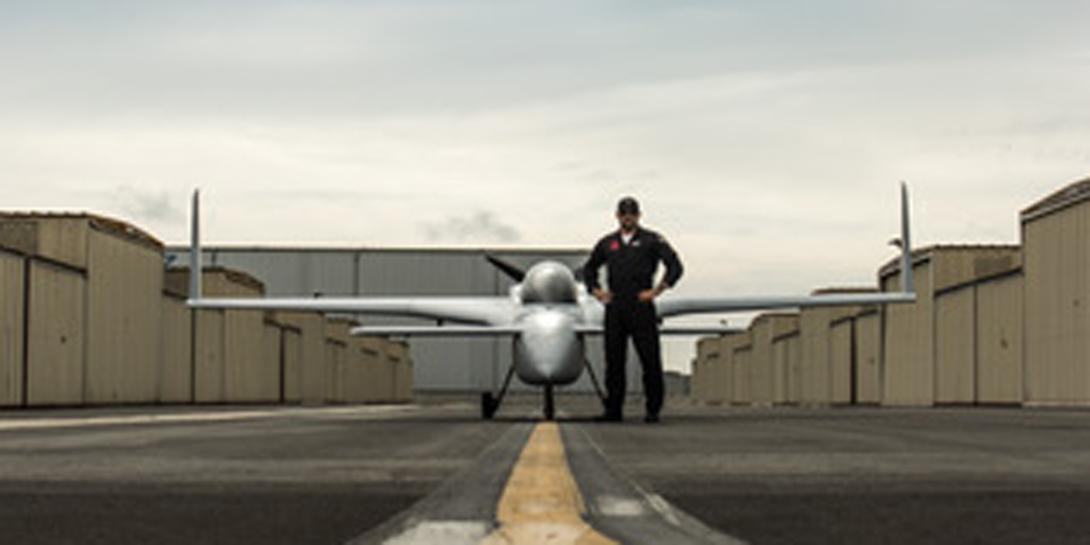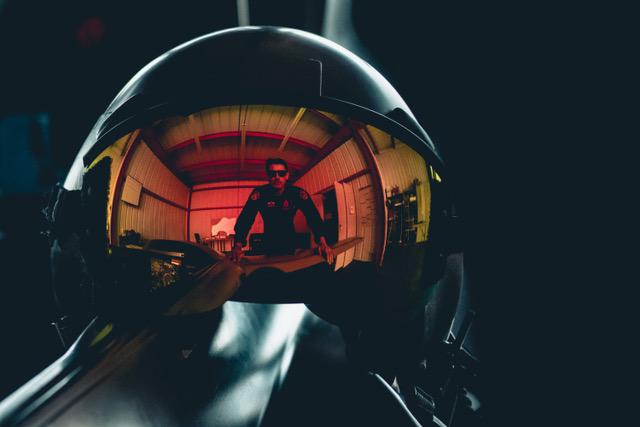Flying with Augmented Reality
The ability to train top U.S. military aviators in air-to-air combat usually requires pilots acting as opposing aerial fighters. Representing the enemy in training dogfights is quite costly and dangerous, says Daniel Robinson, RAF (Ret.). Robinson, co-founder and CEO of Red6 Aerospace, developed an augmented reality platform, called Airborne Tactical Augmented Reality System, known as A-TARS, that creates virtual opponents, such as the Chinese J-20, for pilots to dogfight against.
“Critically, the pace of innovation that is coming out of our near-peer adversaries is such that we’ve been unable to accurately simulate the kind of threats that we may be called to go against in any near-peer conflict,” said Robinson.
Robinson, who was the first non-U.S. pilot to fly the F-22 Raptor with the U.S. Air Force, saw firsthand the need for so-called red air opponents. “In simple terms, every time fighter pilots go up into the air to train, they need aircraft and pilots to train against,” Robinson told SIGNAL Magazine in a recent interview. “The provision of these opponents represents an acutely-defined pain point, not only for the USAF, but for all services and allied air forces. For the USAF alone, it is a multibillion-dollar-a-year problem and is proving increasingly problematic to solve, given the chronic lack of front line pilots and an aging fleet of aircraft that are no longer capable of simulating the most current threats. ”
Through a patented display technology, the system puts virtual aircraft into a pilot’s helmet display. The current display system has 105-degrees field of view and is integrated into a standard HDU 55 helmet system. It also is daylight capable. “We are able to put virtual airplanes into the real world, into the pilot’s line of sight,” he said. The A-TARS also can be used for any level of aerial combat pilot development.
The U.K. pilot was inspired by technology developed by Red 6’s Chief Product Officer, Glenn Synder. That virtual reality system enabled one driver on a racetrack in the United Kingdom to race against a race car driver in the United States at the same time. “Both racers wore virtual reality-based helmets but were driving real cars, around real race tracks," Robinson said.
“They met each other simultaneously in this virtual world and raced each other around a real track from opposite sides of the ocean,” he explained. “It was an incredible first in VR [virtual reality], and technically very significant. As soon as I saw it, I started connecting the dots and I asked the guys, ‘Is this possible in airplanes rather than cars?’ They said yes, it is quite possible, although complex.”
Robinson recognized that virtual reality, or the complete digital representation of the real world, was not feasible for pilots training in the sky. However, augmented reality, or the overlay of some virtual elements onto the real world, offered promise. Red 6 had to solve the problem of using augmented reality outdoors and in highly dynamic environments, such as jets traveling hundreds of miles per hour and performing rapid maneuvers, he said.
Red6 Aerospace began its technology process, pitching the platform during the Starburst Aerospace Accelerator’s annual East Coast Selection Committee event in 2018 at The Mitre Corporation in McLean, Virginia. The company raised $2.55 million in seed round of financing led by Los Angeles-based Moonshots Capital, along with support from Austin’s Capital Factory, IronGate Capital Advisors, as well as other investments.
The Air Force took notice, especially when Robinson presented his idea to AFWERX—the service’s innovation arm—and to the Air Force Research Laboratory (AFRL). In February, Red6 Aerospace ran feasibility demonstrations for the service, showing the augmented reality platform in a static environment—in the cockpit of a test airplane parked in a hangar.
“We had representatives from the test pilot school, AFRL, Air Combat Command, Air Force Education Training Command,” Robinson said. “They all came to see it. They were able to sit in the cockpit, put a helmet on that we designed, and through the visor system we built they were able to see augmented airplanes around them but also still see the real world.”
After the ground demonstration, the Air Force signed the company to a Small Business Innovation Research (SBIR) Phase 1 contract. Earlier this month, Red6 secured a $1.5 million SBIR Phase 2 contract. The company is conducting aerial demonstrations for stakeholders over the next few weeks.
“Last week, we conducted the world's first-ever multiplayer augmented reality air-to-air refueling tanking sortie in a real airplane and augmented reality,” Robinson reported. “We flew up to the augmented tanker, and were joined by an augmented F-22 Raptor on the wing. We were able to maneuver around the tanker in real time, close into it and even experience the augmented refueling boom plugging into our aircraft. This was a tremendously exciting world first for us. Our proof of concept was a tanker training sortie, but it could have been anything, including a maneuvering J-20.”
Robinson indicated that the Santa Monica-based company is expecting to raise Series A funding during the first quarter of 2020 to continue to develop the technology.






Comments